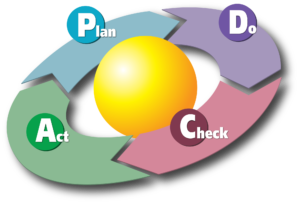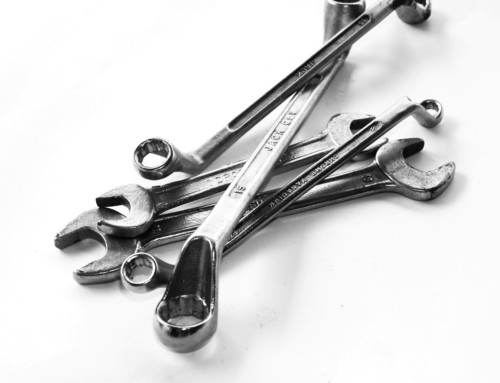Utilizing the PDCA Methodology in Work Planning
 It is well known that maintenance planning & scheduling can deliver significant improvements in the efficiency and effectiveness of the maintenance department. Maintenance planning & scheduling seems simple enough, plan the work and schedule it to be done at the most opportune time. However, why is it that organization seem to struggle with realizing the benefits of maintenance planning & scheduling? In my experience, I have seen organizations that focus on the scheduling portion of work management, while not fully planning the work. Doc Palmer (an authority on Maintenance Planning & Scheduling) has said that you cannot schedule without proper planning. So how is it that they are scheduling work without knowing what needs to be done and what materials are required?
It is well known that maintenance planning & scheduling can deliver significant improvements in the efficiency and effectiveness of the maintenance department. Maintenance planning & scheduling seems simple enough, plan the work and schedule it to be done at the most opportune time. However, why is it that organization seem to struggle with realizing the benefits of maintenance planning & scheduling? In my experience, I have seen organizations that focus on the scheduling portion of work management, while not fully planning the work. Doc Palmer (an authority on Maintenance Planning & Scheduling) has said that you cannot schedule without proper planning. So how is it that they are scheduling work without knowing what needs to be done and what materials are required?
I believe the reason that organizations focus on scheduling first is that scheduling is something we are familiar with. We schedule our personal and business activities every day, so why not start there with the maintenance work? Another reason I believe is that organizations do not know where to start with maintenance planning. Well, the maintenance planning process can be broken down into a process that many people are familiar with, Plan Do Check Act (PDCA).
Plan the Work
The first step to the maintenance planning process is to plan the work. During this step, the work notification is taken and reviewed for financial and technical applicability (making sure the work can actually be done and is cost effective). Once the work notification has cleared the first hurdle, the work can be planned. This involved going out to the job site and documenting the following;
- Work Scope
- Work Procedure
- Potential Safety Issues
- Material Requirements
- Skills Required
- Man-Hours Required
- List of Applicable Documents
This is then compiled into a Job Plan. A Job Plan is a document which serves two main purposes. The first is to communicate the work details to the individual(s) who will be completing the work. The second is to keep knowledge found within the planner and the individual(s) completing the work.
Once the work is fully planned, the Job Plan should be documented in the Job Plan Library. This enables the Job Planned to be accessed again in the future, reducing the amount of time to plan the same or similar work in the future. At this point the work can now be completed.
Do the Work
Before the work can be done, the work needs to be scheduled, but this process is not covered here. Instead, the focus is on how doing the work impacts the maintenance planning process.
As the individual(s) complete the maintenance work, they need to keep a few things in mind;
- Is there anything missing from this job plan (materials, steps, specifications, materials, etc.)?
- Are there any undocumented safety issues?
- What could be changed in the Job Plan to make the work easier, simpler, safer?
As the items above are realized, they should be noted on the job plan for future review. However, the individual(s) completing the work should not be able to deviate from the Job Plan, but make recommendations to arrive at the safest, most efficient way to perform the work. Part of doing the work is providing this feedback to the maintenance planner.
Check the Work
With the feedback provided by the individual(s) completing the work, the planner along with the maintenance supervisor should check to ensure that the feedback provided is relevant and value added to the job plan. This may involve;
- Re-visiting the job site and comparing the feedback to the actual work
- Discussing the feedback with the relevant individuals
- Determining if the feedback will improve the repeatability, ease or safety of the job, or if the feedback is based on individual preference.
Once the feedback has been reviewed and determined to be valid, the planner can now act on the feedback. There should be some form of the review process to ensure that only valid changes are made to the job plan.
Act on the Work
With the feedback validated, the planner can now access the Job Plan and update with the feedback provided. At this point, the Job Plan has now become safer, more efficient and can begin to reduce maintenance induced failures. By beginning to procedural the maintenance activities, the variation in work can be reduced enabling higher reliability. An added benefit of acting on the feedback provided is that the knowledge of the experienced craftsman can be captured for future reference and use by those newer to the job.
Does your Maintenance Planning process follow the PDCA process? What is review process involved in modifying the job plan? Do you keep a job plan library accessible by the maintenance supervisor or craftsman? I encourage you to make one change to you Maintenance Planning process to begin to follow the PDCA methodology.
Remember, to find success; you must first solve the problem, then achieve the implementation of the solution, and finally sustain winning results.
I’m James Kovacevic
Eruditio, LLC
Where Education Meets Application
Follow @EruditioLLC[/fusion_builder_column][/fusion_builder_row][/fusion_builder_container]

